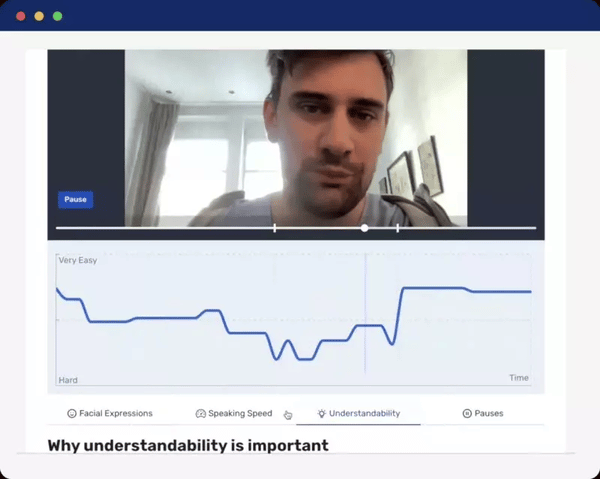Over 60% of negative workplace outcomes are due to toxic workplace behavior.
Toxic may be a strong word that no company wants to associate themselves with, but when it comes to a freeloading coworker or a credit-seizing boss, the word underlines the severity of the issue.
In fact, according to MIT Sloan’s recent study, toxic work culture is the number-one reason people cite for leaving their jobs. What’s equally alarming, is that the number of people Googling “toxic work environment quiz” increased 700% in April this year alone.
So how can we erase toxic workplace culture? What’s the solution to establishing a healthy workplace, where employees feel happy and fulfilled?
It all starts with good workplace behavior training.
What’s in this Post?
- Toxic Behavior in the Workplace: What it Looks like
- Employee behavior training: the key to dissolving workplace toxicity
- Using AI Technology for workplace behavior training
Toxic Behavior in the Workplace: What it Looks like
Toxic workplace behavior can take many forms and thus isn't always easy to spot off the bat. As mentioned before, it could be a co-worker or boss taking credit for another employee's work.
It may also be bullying or harassment, or a company being dishonest or unethical with their employees.
Less evident, but toxic workplace behavior also includes a company not paying their employees what they deserve, or managers not recognizing and rewarding their worker’s achievements. And whether we like to admit it or not, these issues often start from the top.
The managers who should be looking after their workers all too often are the ones who are nurturing this toxicity.
But with toxic culture being by far the strongest predictor of employee turnover, it’s in every company’s best interest to tackle this issue.
In a viral TikTok video posted in May this year, Gerstley, an investment banker shared “toxic workplace phrases” and what their true meanings are.
First of all, she decoded the meaning of a "fast-paced environment" as "no time off”; a company that “needs a self-starter" really means that they offer "no training but still expect results”.
Gerstley continued if the company says their employees "must wear multiple hats" except that they are simply understaffed, and finally, she translated the phrase, "We're like a family" That means "no raises ever" according to Gerstley.
| When a toxic company says... | ... they really mean: |
| "fast-paced environment" | "no time off” |
| "needs a self-starter" | "no training but still expect results” |
| "must wear multiple hats" | "we're understaffed" |
| "We're like a family" | "no raises ever" |
Employee behavior training: the key to dissolving workplace toxicity
Now that we know what toxic workplace culture is, and how we can identify it, the next question is, how can we change it? How can we foster an environment where all employees feel fulfilled and motivated in their roles?
The answer is refreshingly simple: workplace behavior training.
Workplace behavior training is designed to develop employees' and managers' behavioral skills, in order for them to increase their self-awareness, learn how to handle difficult situations, and improve their overall interpersonal skills (aka. soft skills).
In fact, soft skills have become more and more crucial in a healthy work-culture environment. While in the past, hard skills were what employers heavily looked for when screening candidates, hiring managers admit that workplaces today demand a marriage of hard skills and soft skills from their employees, with soft skills arguably being just as, or of higher importance.
“Our highly connected world demands that executive teams have a clear grasp of the implications of their actions, their words, and their perceptions.”– Bob Moritz, Chairman of PwC
Using AI Technology for Workplace Behavior Training
Employees with high levels of soft skills are in high demand.
As behavioral skills are becoming a necessary ingredient to any healthy and sustainable workplace culture, companies are addressing the matter and promoting a healthy workplace environment by establishing behavior training programs for employees.
That's why it's no surprise that companies are picking up pace with learning and development (L&D) programs.
In fact, 41.7% of global Fortune 500 companies use some form of E-learning technology to address skill gaps, meaning 4 out of the 10 biggest companies in the world recognize the value that E-learning brings to the table.
Online behavior training programs allow for:
- Fully remote, on-demand training & coaching
- Scalable training and standardized training program quality (globally)
- Interactive & immediate feedback
Despite the many advantages of e-learning platforms, they aren't without their downfalls. Despite the plentiful knowledge, the lack of interactivity means that they do not have the ability to shape behavior, communication, or interpersonal skills - in other words, the soft skills that are vital to foster healthy workplace employee interaction.

On the other hand, AI platforms such as Retorio make it possible to add people analytics and data to each stage of the training process. Using AI can help companies understand how different employees lead, communicate, influence, collaborate, as well as manage stressful situations.
This, in turn, helps improve employee self-awareness and provides a platform to practice training soft skills anonymously.
Want to try out Retorio for yourself?



